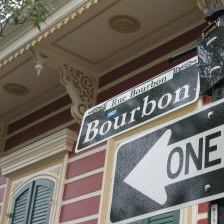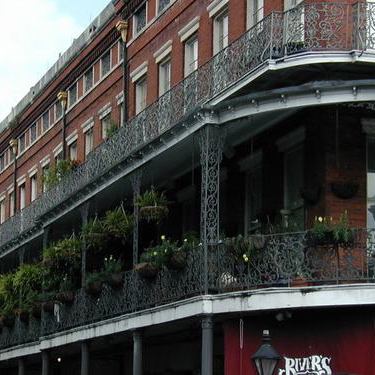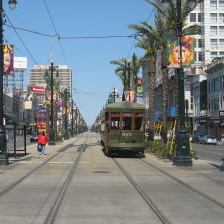 Mardi Gras week starts tomorrow—are you ready? Starting February 18, hundreds of thousands of people from all over the country will descend on New Orleans, the traditional home of Mardi Gras, to party in the streets and watch more than 30 parades.
Mardi Gras week starts tomorrow—are you ready? Starting February 18, hundreds of thousands of people from all over the country will descend on New Orleans, the traditional home of Mardi Gras, to party in the streets and watch more than 30 parades.
Mardi Gras (which translates into “Fat Tuesday” in English) is the final day of the decadent revelry that starts on January 6, the Feast of the Epiphany, and ends at midnight on the Tuesday preceding Ash Wednesday.
In the Roman Catholic calendar, Ash Wednesday marks the start of Lent, the 40-day period of austerity and penitence that leads up to Easter Sunday.
This year Mardi Gras falls on February 24, though the official festivities ramp up starting six days before. If you intend to head down to NoLa to join the party, here’s a quick guide to what you need to know to make your visit as stress-free and fun as possible while you laissez les bon temps rouler (let the good times roll).
What’s New
 Mardi Gras World, the facility where floats can be viewed, is in a new East Bank riverfront location this year, just upstream from the Convention Center on the Delta Queen Steamboat Wharf. More than four times larger than old Mardi Gras World, the 300,000 square foot area will offer tours and pickups from local hotels in their fleet of minibuses.
Mardi Gras World, the facility where floats can be viewed, is in a new East Bank riverfront location this year, just upstream from the Convention Center on the Delta Queen Steamboat Wharf. More than four times larger than old Mardi Gras World, the 300,000 square foot area will offer tours and pickups from local hotels in their fleet of minibuses.
This year also marks the 100th anniversary of Zulu, the oldest African-American Mardi Gras parade “krewe,” Starting with humble origins in 1909, Zulu has since evolved into one of the most famous and colorful parades, and the beautifully adorned coconuts thrown by krewe members are considered some of the most valuable “catches” of Mardi Gras week.
The history of Zulu is also the subject of a year-log exhibit at Presbytere, which is part of the Louisiana State Museum complex.
https://lsm.crt.state.la.us/Zulu/index.htm
Partying It Up
 There are approximately 30 parades this year, and they happen at the rate of three or four a day. To see a parade schedule, click here.
There are approximately 30 parades this year, and they happen at the rate of three or four a day. To see a parade schedule, click here.
The most kid-friendly parades can be found along St. Charles and Napoleon Avenues. A good way to know if a parade is kid-friendly is to look for ladders—many people sit their kids on them so they can get a clear view of the show.
Parades in the Marigny district on Frenchman’s Street (opposite the Esplanade) tend to have a more local feel, whereas downtown is where the wildest, most R-rated parade action is to be found. The Tremé district offers a distinctly African-American parade experience, and you might also find brass bands roaming the street and impromptu parades popping up out of the blue.
Though the French Quarter is probably the most well-known part of New Orleans, don’t forget that no big parades actually happen there—the closest they come is Canal Street.
The evening balls are a popular post-parade activity, but remember that most of them are actually private and invitation-only. However, there are a few this year that the public can attend including Orpheus, Zulu and Endymion(which will feature entertainment by Jim Belushi and Harry Connick, Jr.).
Prices range from about $135-$225 per person and information on purchasing tickets can be found by going to the relevant krewe’s Web site.
Orpheus: www.kreweoforpheus.net
Zulu: www.kreweofzulu.com
Endymion: www.kreweofendymion.org
Accommodations
It is still possible to get a hotel room this weekend, though you may have to hunt around a little online, or ask your travel agent to search for you. If you can’t find a room near the city center, consider staying in a suburb, or even a nearby town like Metairie (about 11 miles away).
The New Orleans Visitor and Convention Bureau offers a portal to book rooms, and even has a section that lists deals offered by various hotels and inns. Check out www.neworleansonline.com for more information.
Transportation and Safety
 Renting a car may be a convenient way to get around, but is not the most practical mode of transit during the crazy Mardi Gras week.
Renting a car may be a convenient way to get around, but is not the most practical mode of transit during the crazy Mardi Gras week.
But you still have options for getting around: streetcars run almost every where and are cheap and convenient. They stop running during parades, but start again as soon as they are over. Bicycles are a popular alternative and can be rented at places such as Bicycle Michaels on Frenchmen’s Street. www.bicyclemichaels.com
However, walking is king in NoLa! Don’t forget that it is a relatively compact city, and it’s only about three miles from downtown to the Garden District.
To avoid the minor (but possible) chance that you will be pickpocketed while wandering among the crowds, practice common sense: Be aware of your surroundings; don’t lose your bearings; don’t carry a bunch of money; and keep just the essentials in a fanny pack or small bag.
Since Mardi Gras falls relatively late in the winter this year, the city has been experiencing some nice spring weather. However, it does cool off in evening, so remember to layer your clothes.
Celebrating Beyond New Orleans
New Orleans is not the only place to celebrate Mardi Gras. Mobile, Alabama has its own version of Carnival, and was the home of the original Mardi Gras celebration in 1703. Mobile’s parade and party is known to be a little more family-friendly, with animated floats and marching bands.
St. Louis is known for its famous Beggin’ Pet Parade, in which thousands of four-legged critters and their owners dress up and march through the historic Soulard neighborhood.
Galveston, Texas, and the Ark-La-Tex area of northwestern Louisiana also offer funky celebrations. In fact, the Krewe of Centaur Parade in Shreveport/Bossier City is the second largest in the state. www.kreweofcentaur.org
And lastly… if you can’t make it to New Orleans in person, you can watch the parades live online at the Mardi Gras Day Web site. Check www.mardigrasday.com for more details.
Related stories:
- Two Years Later, Two Stories of New Orleans
- The Slow Burn in New Orleans
- Travel Editor Millie Ball on New Orleans and Russia
By Karen Elowitt for PeterGreenberg.com












